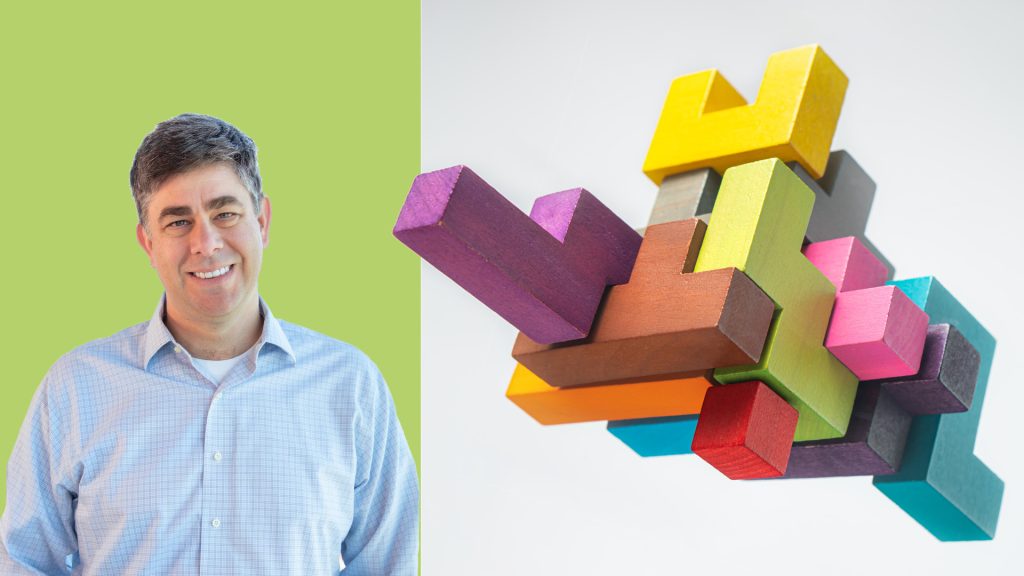We ask five leading AEC software developers and four startups to share their observations and projections for BIM 2.0
Unlocking the Future of BIM with Interoperability
Mark Schwartz, SVP, Trimble
By some measures, the pace of change in the AEC industry is driving more change, more innovation and more complexity than at any time in history. It’s also safe to say that the pace of change will never again be as slow as it is today.
The arsenal of technologies AEC professionals use to do their jobs continues to grow. Modern projects have many stakeholders, each providing highly specialised contributions to a project and generating valuable project data. With each stakeholder employing a different stack of hardware and software, each with its own data formats and validation, permissions and security parameters, pulling the data thread across disciplines, systems and project phases has become increasingly arduous. At the same time, it’s never been more clear that consolidating project information is a critical problem to solve.
Just like every other project phase, design requires a new focus on openness and interoperability, allowing connected teams to continue using those models throughout projects and across the complete asset lifecycle – from design to build to maintain. A connected ecosystem allows everyone throughout the asset lifecycle to work with their preferred tools, minimise rework, make informed decisions and collaborate effectively.
Find this article plus many more in the Jan / Feb 2025 Edition of AEC Magazine
👉 Subscribe FREE here 👈
From inflexible and siloed to open, connected ecosystems
The free movement of data between systems and workflows is the next great productivity breakthrough in AEC. The industry is shifting away from inflexible, closed technology suites to more open and connected ecosystems. Project teams and project owners are demanding the benefits that interoperability brings – not just to task optimisation, but as a way to optimise the entire asset lifecycle.
It’s not a lack of innovation that has the construction industry mired in its low productivity index. Many project teams are actually quick to adopt new technologies and techniques. The problem is the level at which that innovation is happening. Sure, we can make a task easier to do, but the benefit stops right there, with that stakeholder. The next-level challenges are going to be solved through improved data flow across projects, stakeholders and the asset lifecycle.
At Trimble, we’re creating integrations between our products and third-party solutions. We’re also providing tools for construction businesses to build new integrations to solve further data challenges. Over 100 preconfigured integrations are available on Trimble Marketplace, and Trimble App Xchange empowers software developers to build integrations for their customers. App Xchange and Trimble Marketplace are key parts of our commitment to facilitating open, interoperable systems and an automated flow of data between solutions from Trimble and other software vendors.
Compliance with accepted standards is another area of responsibility for tech providers. Trimble software and platforms enable the import and export of a wide range of product-specific and global file formats, including IFC. In addition to our strategic advisory role with BuildingSmart, Trimble also joined the AOUSD Alliance, which is dedicated to promoting the interoperability of 3D content through Universal Scene Description (OpenUSD), helping improve interoperability between SketchUp and other platforms, like Nvidia Omniverse Cloud, for more advanced visualisation.
In the grand scheme of things, no single tech vendor can – or probably should – provide it all. As a result, we’re seeing a broader industry shift away from inflexible, closed technology suites to more open and connected technology ecosystems.
When we can meet people where they are, with the tools they’re already using, we begin to see the real power of data. For example, an architect uses one tool for conceptual design and then brings that data into their preferred BIM solution to create an architectural model. The architectural model is then used as a reference file to build detailed structural engineering models to automate the fabrication of components.
In a connected data environment, such as Trimble Connect, working models can be available to everyone who needs them. In the field, models can be accessed in Trimble Connect and with an augmented reality system, such as Trimble Sitevision, workers can place and view georeferenced 3D models —above or below the ground to accurately install or validate field assembly.
Interoperability will unlock emerging tech
We’ve already begun to see the value of AI in AEC. Trimble and other vendors are incorporating AI into customer workflows to enhance decision-making and creativity, and automate repetitive tasks. From automated scan-to-3D workflows to generative design solutions like SketchUp Diffusion, which produces stylised renderings in seconds based on presets or natural language text prompts, AI is a catalyst for creativity and an engine for productivity.
Like BIM, unlocking transformative value from the next wave of AI will depend on interoperability and high-quality data. With more data moving between systems and across disciplines, we can explore advanced forms of AI, such as AI agents. Unlike generative AI, an AI agent works independently, with little to no human interaction, to perform a specific task. AI agents will reflect and iterate, plan ahead by defining priorities and tasks, and access tools and real-time data, such as information provided by in-field sensors.
Numerous agents across disciplines may use the same project data to perform their unique tasks. For example, various agents would use scan data to assist with separate tasks related to estimating, project management, and scheduling. To use this data across different project phases and disciplines, various AI agents must be able to access and understand the data, regardless of which system it originates from.
The work continues
Projects today are far more sophisticated and data-driven than at any time in history, and the need for connected data has never been clearer. The industry has made strides toward more connected workflows and data sharing, but the work is not done.
As the ecosystem of AEC hardware and software expands and becomes more complex, interoperability will be the key to unlocking the value of data, extending the value of BIM and maximising emerging technologies
.
Read more opinions
The startups
 Breaking the compromise in digital project delivery
Breaking the compromise in digital project delivery
Erik de Keyser, co-founder, Qonic
 Beyond Buzzwords: the real future of BIM
Beyond Buzzwords: the real future of BIM
Paul O’Carrol, CEO, Arcol
 Beyond Legacy Thinking
Beyond Legacy Thinking
Altaf Ganihar, founder and CEO, Snaptrude
 BIM 2.0: why it’s time to reinvent the tools that power the built world
BIM 2.0: why it’s time to reinvent the tools that power the built world
Amar Hanspal, CEO, Motif
The established players
 Embracing AI and Boosting Sustainability Across Project Lifecycles
Embracing AI and Boosting Sustainability Across Project Lifecycles
Daniel Csillag, CEO, Graphisoft
 AI: Our Generation’s Paradigm Shift
AI: Our Generation’s Paradigm Shift
Tom Kurke, VP, Ecosystems & Venture, Bentley Systems
 The Future of BIM: Harnessing the Power of Data
The Future of BIM: Harnessing the Power of Data
Amy Bunszel, executive VP of AEC Solutions, Autodesk
 Design transformed: 2025 predictions from Vectorworks
Design transformed: 2025 predictions from Vectorworks
Dr. Biplab Sarkar, CEO, Vectorworks






